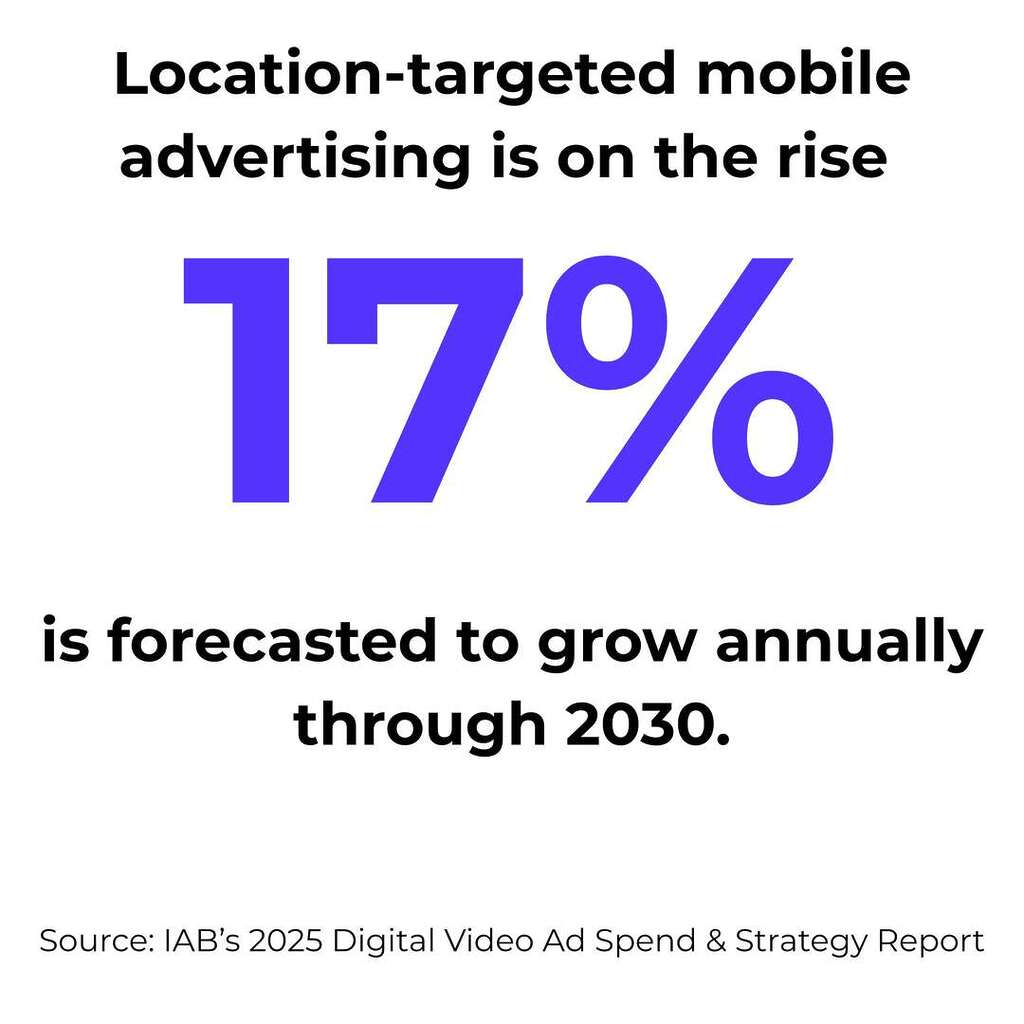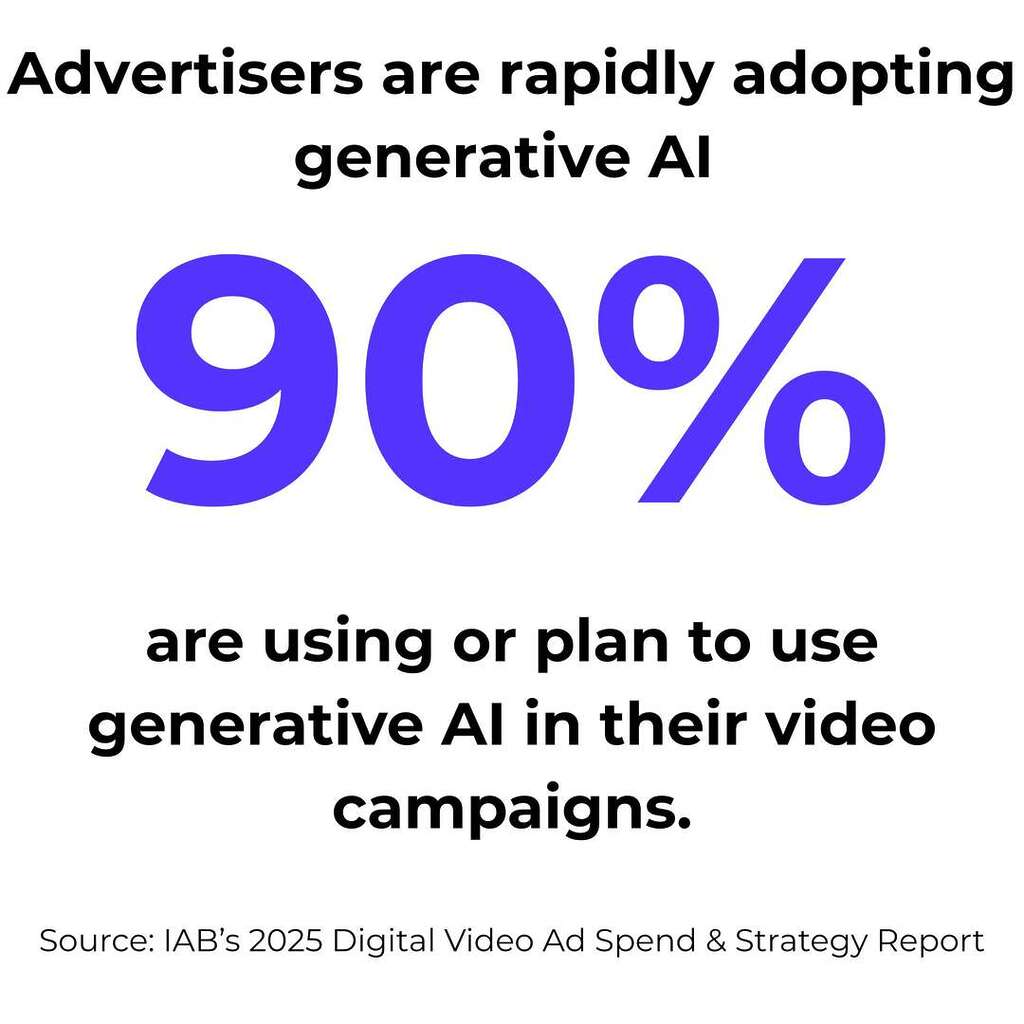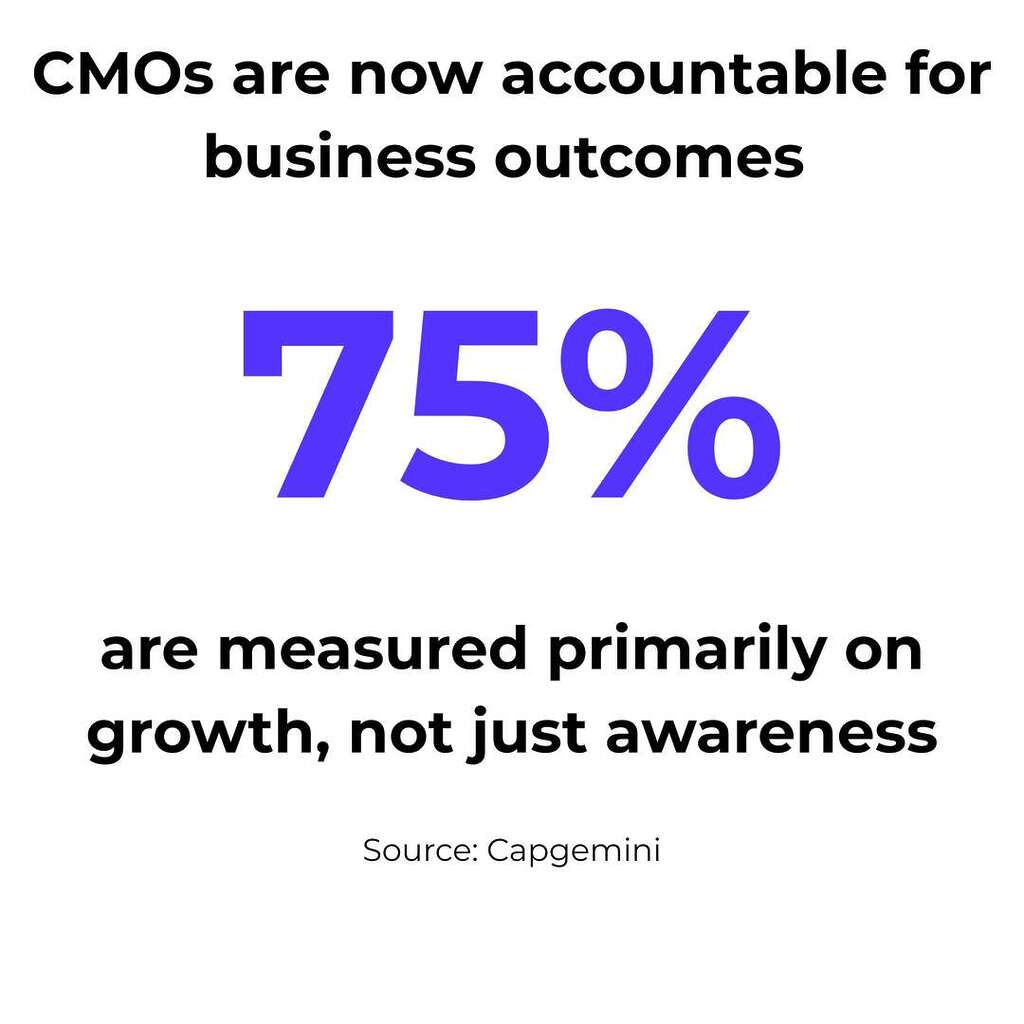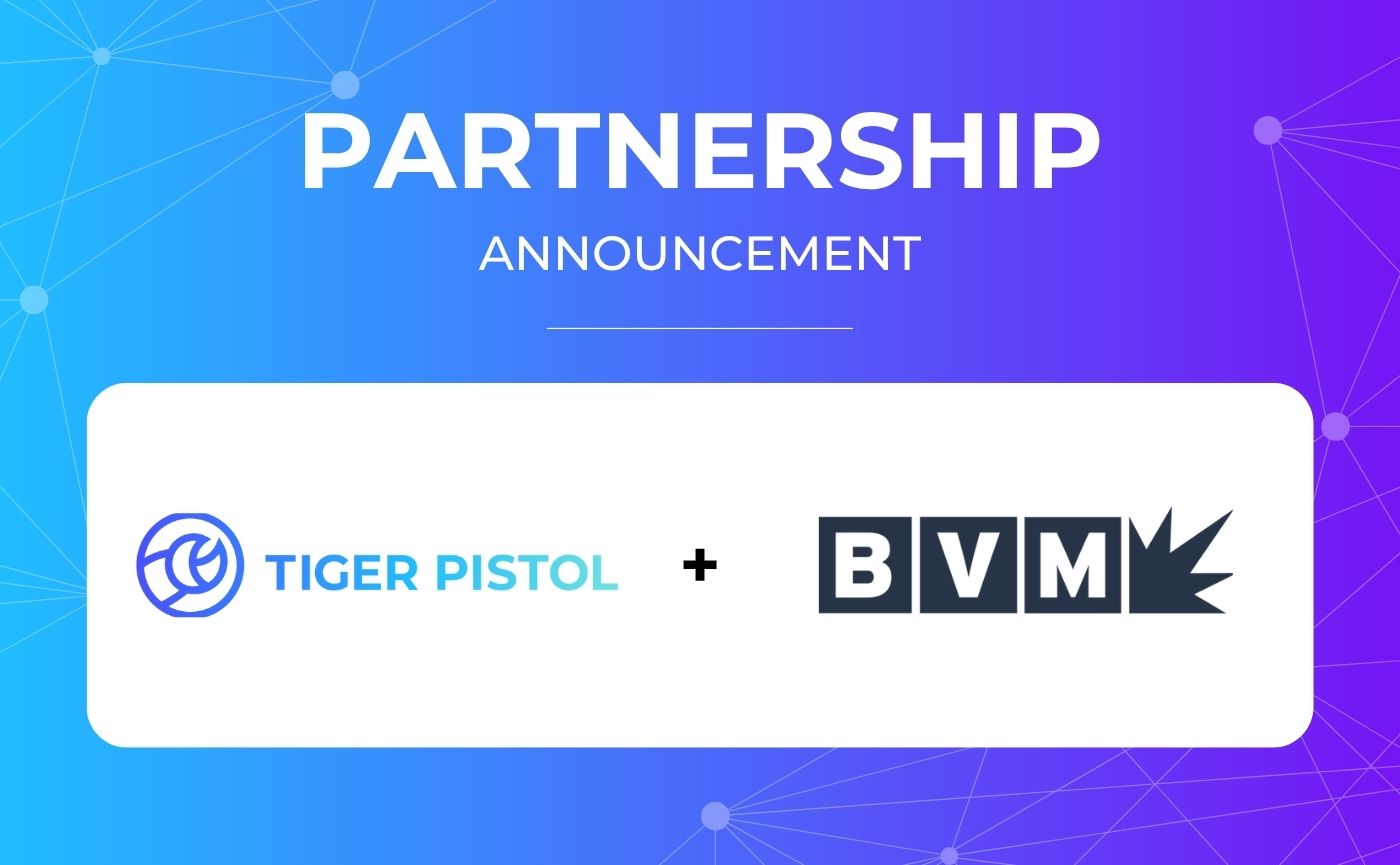The 2026 Local Advertising Planning Guide for Multi-Location Brands
Why AI-Powered Local Advertising Defines Growth in 2026
The days when a national campaign could reliably move products across every local market have passed. Rising media costs, shifting consumer behavior, and tighter margins have created a new mandate for multi-location brands: demonstrate value at the store level.
Consumers are more mobile, more locally focused, and more insistent on context. They expect brand advertising to show up in ways that feel unique to their community, from the promotions they see on their social feeds to the signage they encounter in-store. Local business partners, such as dealers, distributors, retailers, and regional operators, feel that pressure every day. They need brand programs that help them capture attention, drive sales, and sustain loyalty in their neighborhoods.
The industry reflects this shift. Location-targeted mobile advertising is forecasted to grow nearly 17% annually through 2030, as budgets move toward campaigns tied to place and moment. For multi-location brands, local advertising has become the core growth strategy powered by automation, intelligence, and partnership.

Platform and Technology Trends Reshaping Local Advertising
Three major forces are reshaping local advertising strategies in 2026: automation, location intelligence, and heightened partner expectations.
Automation and AI are redefining scale. Meta’s roadmap toward fully automated ad creation by 2026 signals a broader movement across the industry. Nearly 90% of advertisers plan to use generative AI for video campaigns, with half of all video ads expected to include AI-generated elements. For multi-location brands managing thousands of store-level placements, automation means precision and efficiency. Leading local advertising platforms already handle templated creative, localized variations, and approval workflows in minutes rather than days.
Location intelligence is emerging as a key differentiator. Geo-marketing has been shown to increase campaign performance by 22% to 40%. Targeting by DMA, city, or neighborhood allows brands to align spend with the realities of each local market.

Partner expectations are evolving. Local operators expect technology to make their jobs easier, not harder. Pre-approved templates, seamless workflows, and clear dashboards are now baseline requirements. Brands that deliver user-friendly tools earn loyalty and engagement from their partners.
The result is a model built on efficiency and empowerment. When brands simplify execution, local partners adopt more campaigns, extend reach, and amplify the brand’s message with community authenticity.
Partner Enablement: Supporting Local Business Partners
Local partners are the connective tissue between the brand and the community. They are store managers, regional distributors, and independent dealers, people who understand their neighborhoods but often lack time for complex marketing.
The key is structured choice. Brands can provide partners with pre-built campaigns, creative guardrails, and localized flexibility. Partners then select the campaign, personalize key details, and publish instantly. In the automotive industry, a dealer might highlight a service special during a cold-weather snap. In beverage, a convenience store might localize a campaign for a game-day promotion.
Advertising should take minutes, not hours. When campaign execution fits the rhythm of a retail day, participation rises. As participation increases, so does scale. The most effective multi-location advertising programs make local activation a simple, repeatable habit, and that consistency drives measurable results.
Geo-Targeting as the Bridge Between National and Local
Not every brand has direct access to local ad accounts. In these cases, geo-targeting provides the bridge between national control and local relevance.
Geo-targeted campaigns allow brands to run ads by DMA, ZIP code, or region, maintaining brand consistency while ensuring spend is tied to the markets that matter most. This approach delivers flexibility without losing efficiency.
Case studies from brands such as Coca-Cola and BuzzBallz illustrate the impact. When geo-targeted campaigns mirror the rhythm of local life, whether that means weather-driven beverage promotions or regional event tie-ins, performance improves without requiring every partner to be individually onboarded. Geo-targeting connects national investment with local impact, filling the gap when store-level execution isn’t yet possible.
Retail Chain Co-Marketing: Aligning National Strategy with Local Promotions
Some of the strongest multi-location results occur when brands and their retail partners share the same campaign. In a parent-child co-marketing model, the brand funds or co-funds the creative while retail partners customize messaging for their markets.
This approach maintains creative integrity while adding flexibility. A grocery chain might promote a brand’s seasonal beverage alongside its loyalty app. A pharmacy might co-promote a wellness product with its local clinic.
Examples from Nestlé, Asahi, and AB InBev show how collaborative co-marketing boosts both visibility and sales. These programs deepen relationships by giving partners a meaningful stake in the campaign’s success while giving the brand a clear picture of impact. Unified reporting shows how shared investment translates into measurable store-level gains.
Co-marketing turns alignment into momentum. When brands and partners move together, the result is stronger loyalty and more predictable growth.
Agility in Action: Adapting to Local Conditions
Markets move fast. Weather changes, inventory fluctuates, and community events shift demand overnight. Local advertising platforms now make it possible for brands to respond to these variables in real time.
A dealer can highlight new arrivals the day they land. A beverage brand can pivot from summer refreshment to football season tailgates in a single click. A pharmacy can promote allergy relief when pollen counts spike.
This agility keeps campaigns relevant and credible. For local partners, it signals that the brand understands their world and moves at their pace. Agility transforms brand support from a static resource into a living system that is responsive, contextual, and grounded in the realities of the market.
Measurement: Proving Value at the Store Level
Credibility in local advertising comes from visibility. Growth happens when results are measurable, where they matter most: at the store, the dealership, the bar, or the checkout counter.
Dashboards that track impressions, clicks, redemptions, and foot traffic at the partner level tell a clearer story. They tie spend directly to outcome, showing which campaigns are driving engagement and sales.
This shift toward measurable outcomes mirrors broader efforts to hold marketing accountable. Capgemini reports that 75% of CMOs are now judged on growth rather than awareness. For multi-location brands, measurement means more than performance metrics; it’s a trust mechanism. When partners can see tangible impact, they reinvest. When the brand can demonstrate localized ROI, budgets expand.
Transparent reporting closes the loop between national strategy and local execution, ensuring every participant sees their contribution to success.

Building a Future-Ready Local Advertising Program
A future-ready program blends flexibility, automation, governance, and enablement. Campaign structures should accommodate both brand-run and partner-run executions, with hybrid options to adapt to market maturity and channel structure.
Automation should handle what’s repeatable, such as versioning, approvals, and reporting, so marketers and partners can focus on strategy. Governance ensures campaigns remain compliant and on-brand, while privacy protections and creative guardrails provide structure without slowing down the pace.
Training completes the picture. When local partners understand how to launch, localize, and measure campaigns, participation grows organically. Future-ready brands don’t simply manage campaigns; they orchestrate a system where every store, region, and partner contributes to collective performance.
Conclusion: Where Brand Meets Shelf
In 2026, growth for multi-location brands will hinge on the ability to activate locally at scale. Success depends on turning brand strategy into local reality through automation, AI, and strong partnerships.
The modern advertising program delivers more than efficiency; it delivers connection. It ensures that a national message feels personal in every neighborhood, every storefront, and every screen.
Growth happens where brand presence meets community presence. It shows up on the shelf, in the showroom, and on the street. The brands that master this intersection will define the next era of local marketing success.
Discover how Tiger Pistol can power your local advertising success
Key Insights
- Local advertising is the growth engine for multi-location brands. National campaigns build awareness; local activations convert it into sales.
- Automation and AI enable scale and efficiency. They allow thousands of localized campaigns to launch in minutes with minimal oversight.
- Geo-targeting connects national strategy to local markets. When partner access isn’t possible, DMA or regional campaigns maintain relevance and precision.
- Co-marketing amplifies collaboration. Shared funding and localized creative align brand consistency with partner initiative.
- Agility sustains authenticity. Rapid, creative updates tailored to local conditions keep campaigns relevant and credible.
- Measurement builds trust. Store-level dashboards and transparent ROI reporting reinforce confidence across the network.
Questions Answered
Why is local advertising essential for multi-location brands in 2026?
Growth now relies on transforming national awareness into local initiatives. Consumers make purchase decisions close to home, and brands must appear where those choices happen locally, contextually, and consistently.
How does automation improve multi-location advertising?
Automation manages repetitive processes such as creative scaling, targeting, and reporting, allowing marketers to deliver pre-built, localized campaigns that partners can publish instantly.
What is the advantage of geo-targeting for multi-location systems?
Geo-targeting maintains local relevance and efficiency even when direct access to partner ad accounts isn’t available, tying spend to meaningful markets.
How does co-marketing benefit both brand and partner?
Co-marketing allows national brands and retail partners to share campaigns, align promotions, and share success metrics, strengthening relationships and increasing sales.
What metrics matter most?
Engagement metrics like impressions and clicks provide context, but local outcomes such as redemptions, foot traffic, and point-of-sale lift prove actual value.
How can brands future-proof their local advertising programs?
By combining automation, flexible campaign structures, governance, and training. Programs that are easy to use, data-informed, and adaptable will scale faster and perform better.
Learn More About Local Advertising
Tiger Pistol Launches 2026 Planning Guides to Define the Next Era of Local Advertising
New Industry Roadmaps Reveal How AI and Automation Are Rewriting the Rules of Local Growth for Franchises, Multi-
Best Version Media Selects Tiger Pistol to Power Scalable Social Advertising for SMB Clients
Two-year agreement enables BVM to streamline fulfillment, automate local campaigns, and deliver exceptional resul
What SMBs Want – And How Local Advertising Automation Delivers It
Small businesses have clear goals: save time, drive growth, and stay connected to their customers. According to i
Let us show you the remarkable impact of local advertising. Start your journey today.
Lorem ipsum dolor sit amet, consectetur adipiscing elit. Ut elit tellus, luctus nec ullamcorper mattis, pulvinar dapibus leo.




